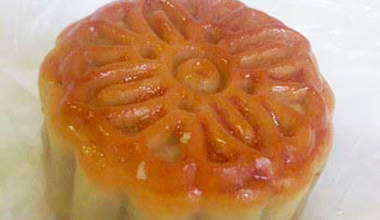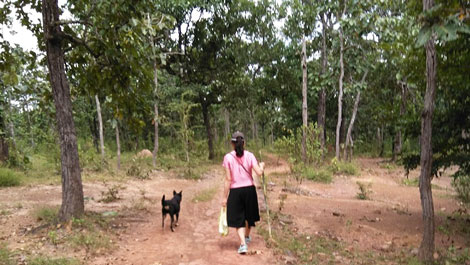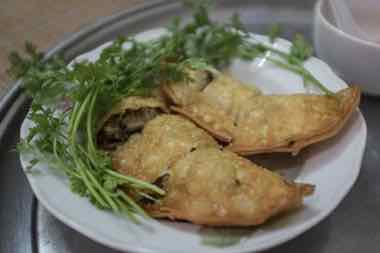Two kinds of cakes made from simple local ingredients show the diverse culture of An Giang – a Mekong Delta province and also one of the most mysterious and mesmerizing places in Việt Nam.
Both cakes are bánh bò or steamed rice cake. The most renowned one is bánh bò thốt nốt (steamed rice cake with palm sugar paste), while the other is called bánh bò Chăm – a rice cake made by Chăm ethnic people in An Giang.
Rice flour, coconut milk, and products from palm trees are the common ingredients of these cakes. They are authentic, locally grown, and made, as An Giang is a home to endless paddy fields and palm trees. However, each cake has its own flavour and characteristics, ranging from ingredients to cooking methods.
Palm everything
My hunt for bánh bò thốt nốt was not easy in the bustling Châu Đốc Market. However, missing out on the cake altogether would have been tough due to its glowing colour. Brightening up a corner of the market was a stall with little shiny golden rice cakes covered in green leaves.
“The most indispensable element of bánh bò thốt nốt is the palm meat, which is made from ripe palm fruits,” a seller said.

I took one bite. Besides the moist and fluffy texture of the cake, I noticed the cake was not as sugary as other rice cakes. It had a fresh and rich sweetness instead. It turned out people only used palm sugar for this kind of cake.
Bánh bò thốt nốt originated in Thất Sơn, a mountain range shared by Tịnh Biên and Tri Tôn districts, the motherland of palm trees. As this is also the area Khmer ethnic community resides, the cake has the features of Khmer culture: from authentic local ingredients to natural flavours and a meticulous cooking process.
Making the cakes is sophisticated and hard work.
The rice chosen for bánh bò thốt nốt should be Nàng Nhen rice, a traditional local brand from Thất Sơn, due to its fragrance and texture.
It is rinsed for hours before being ground into flour. The rice flour will be then mixed with sugar, salt, fermented rice, palm powder, and water to form dough. The ingredient ratio needs to be just right, otherwise, the cake will either be too wet or too dry.
After going through an overnight fermentation under 60 degrees Celsius, the dough is poured into palm-sized banana leaves and goes into a steamer for 20 minutes.
In total, it takes at least 20 hours to make bánh bò thốt nốt from scratch, according to the seller.
Unique technique
On the hunt for bánh bò thốt nốt, I was introduced to bánh bò Chăm.
After only five minutes by ferry crossing the Hậu River from Châu Đốc, I arrived in Châu Phong Village. Following locals’ recommendations, I went to the bánh bò shop by Rophyah, an ethnic Chăm cake artisan.

My first impression of bánh bò Chăm was that it looked like a Western pancake. Unlike steamed bánh bò thốt nốt, bánh bò Chăm is baked on clay ovens. That is why this treat is also called bánh bò nướng, literally translated in English as a baked rice cake.
There are two ovens used to make bánh bò Chăm, one for heating the pan, the other one for heating the lid.
Rophyah said it is crucial to heat the lid up before using it to cover the cake batter, adding that the hot lid will hasten the process and give it a nice golden colour and eye-catching cracks on the surface. An alluring fragrance from the cake will bloom out through cracks, enticing anyone.
She was true. My salivating mouth wanted a bite. “Pop”, “crackle”, the sound of the crispy edge was the first thing I could hear when trying the cake, followed by the coconut’s milk creaminess and palm sugar’s sweetness. It was a party of flavours in my mouth.
The key fuel for the ovens is dry coconut shells due to their steady heating ability, the cake artisan added.

However, the most important factor for the best bánh bò is always the experience of the cooks, according to Rophyah.
“It is not only skills or cooking methods, but also the love for what you cook,” she said.
Her shop opened only from 5am to 9am, and Rophyah worked non-stop to serve her customers like she has been doing for more than 20 years.
Both kinds of cakes have the features of their cultures as well as the sincerity and diligence of people who make these little treasures. They are must-try and symbolic snacks of An Giang.
This article is published here on Vietnam News.
Original post on here
Visit Minh on the move for more stories.























